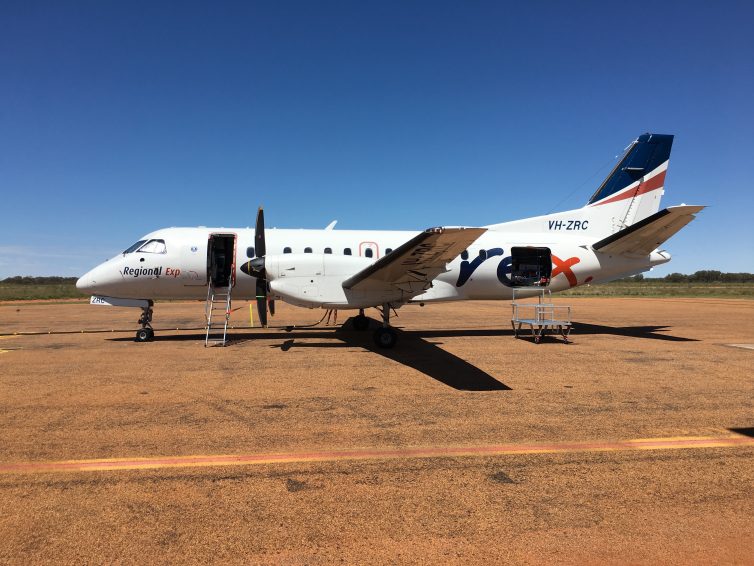
Eight hours on a Saab, am I crazy? You bet! – Photo: Jacob Pfleger | AirlineReporter
On my last trip to Australia, I was fortunate enough to experience the “Centre Run” with Airnorth; a series of flights through the centre of the country. Now while this was an exciting adventure, there is an even more crazy series of flights that can be done in outback Australia. I am referring to the Regional Express (Rex) Milk Run.
This milk run serves a series of remote communities in the Australian state of Queensland. In total, it is a series of seven flights — yes you read correctly, seven. It originates in the capital of Queensland, Brisbane, and flies all the way up to Mount Isa, a major resource town in northwestern Queensland.
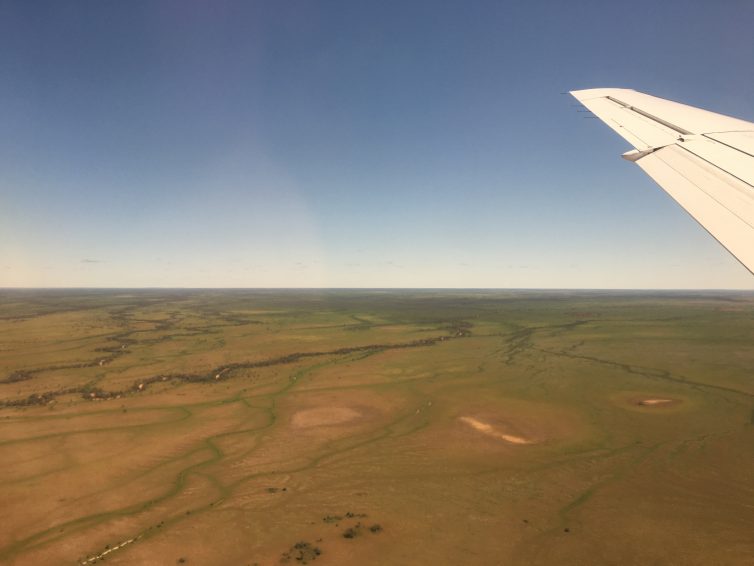
Record rainfall made for an interesting flight in more way than one – Photo: Jacob Pfleger | AirlineReporter
The flights are operated by a Saab 340 turbo-prop, and it is possible to book a ticket from Brisbane-Mount Isa. The price is approximately US$300, which is very affordable given that it includes seven flight sectors and close to nine hours of flying. So on my most recent trip “down-under” I was once again questioning my sanity when I booked this trip (something that is becoming a frequent occurrence on my trips to Australia of late).
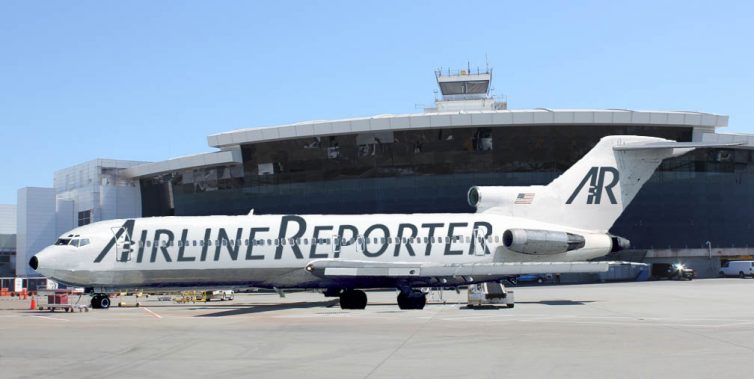
You might have noticed a slowdown of stories coming out of AirlineReporter HQ recently. Many of you have been around for a while, so I wanted to take a step back, catch you up, and then let’s move on forward! Do not worry, we aren’t going anywhere.
I have been running AirlineReporter for just shy of nine years now. It started as a hobby, then transitioned to a business. About a year and a half ago, I quit my job and took on part-time work in order to focus on growing AR. Then earlier this year, I quit that job and did nothing but AR. I had good, viable plans to make AR my full focus (and, somehow, source of income), but turns out it is not for me. Just because you might be good at something doesn’t mean you want to do it. I love flying, I love aviation, I love sharing my stories, I love working with my writers, I love sharing their stories — but I hate running around trying to make money off of all that.
Previously I was warned that when you take something you love and make it your source of your living, you can start resenting it. That happened. And that sucked.
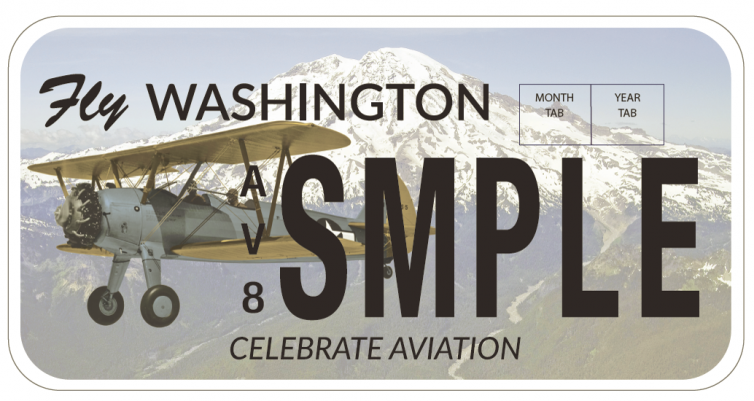
One of the things that I love most living in Washington state (especially Seattle) is all the aviation. It is hard to think of a place that has more of an aviation culture — heck Seattle is even called “The Jet City.” What better state to have a special aviation license plate? With your help, we might be able to make this a reality. If you live in Washington or you know of an AvGeek that lives here, it is time to make a difference in the aviation community (and to your car).
The State of Washington’s Department of Transportation Aviation Division (yes, that is a thing) is working with several aviation organizations, represented by the Washington State Aviation Alliance, to make a specialty license plate that celebrates aviation in Washington. The concept of the plate can be seen above and shows a Boeing-Stearman Model 75 flying in front of Mount Rainier. Very fitting if you ask me, plus I like the “AV8” vertical letters chosen.
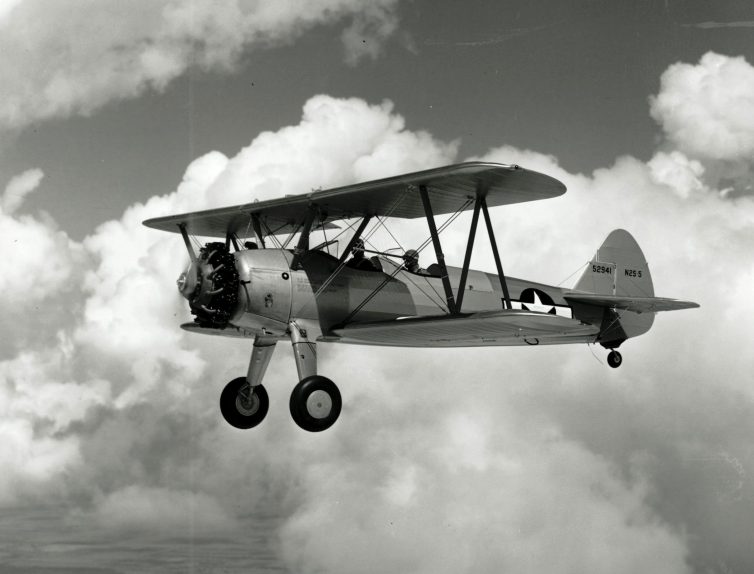
The plate design was based on this photo. Photo: The Boeing Company
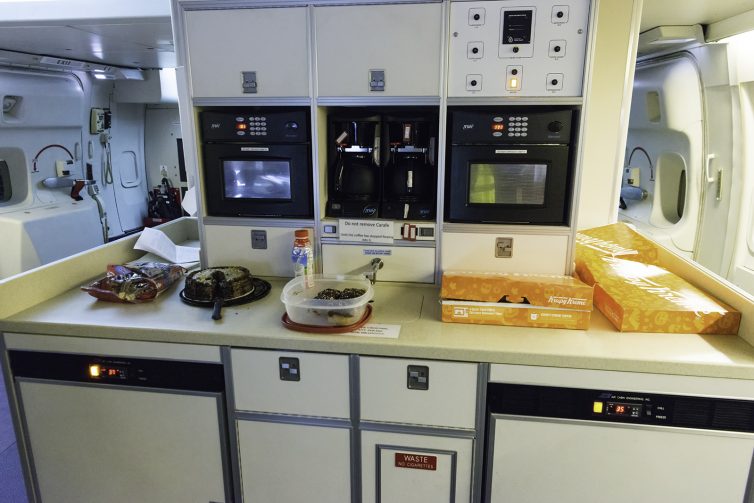
Science and sugar are two sides of the same coin – Photo: Bernie Leighton | AirlineReporter
Recently, I shared some background on NASA’s airborne telescope; the 747SP called SOFIA- the Stratospheric Observatory for Infrared Astronomy. The background is interesting enough, but getting to fly on it was taking this to the next level.
One thing I was not expecting was a bunch of sugar onboard. On top of it recently being the Mission Director’s birthday; myself, the public affairs officer for the program, and the outreach director all brought bags and boxes of empty calories. Delicious, empty calories. Science is hard work, and sugar is a necessity. Doubly so when the Mission Director insists that she is not taking any of the cake home with her.
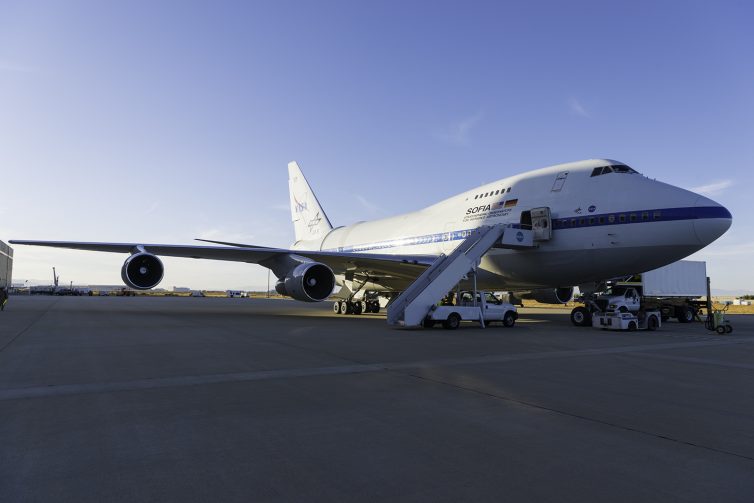
This is where SOFIA is normally parked; from this angle you can better see the telescope fairing – Photo: Bernie Leighton | AirlineReporter
Okay, beyond being a pirate ship full of candy, then? How about a lot of familiar bits and pieces from a number of different airlines?
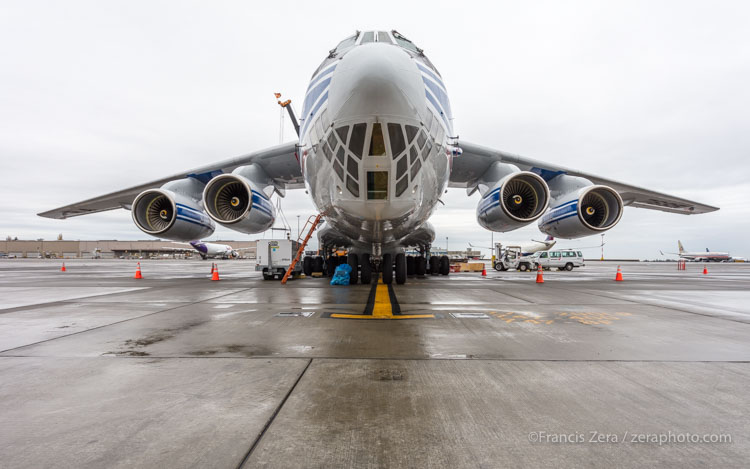
Nose-to-nose with a Volga-Dnepr Il-76. The windows at the forward navigator’s station are a distinctive feature of the aircraft.
With Boeing in our backyard, unusual aircraft are not an uncommon sight at any of metro Seattle’s airports. Antonov An-124s are regular visitors, usually delivering engines to Boeing’s Everett factory. I was recently at Seattle-Tacoma International Airport (SEA) when a rare bird was there to pick up some cargo.
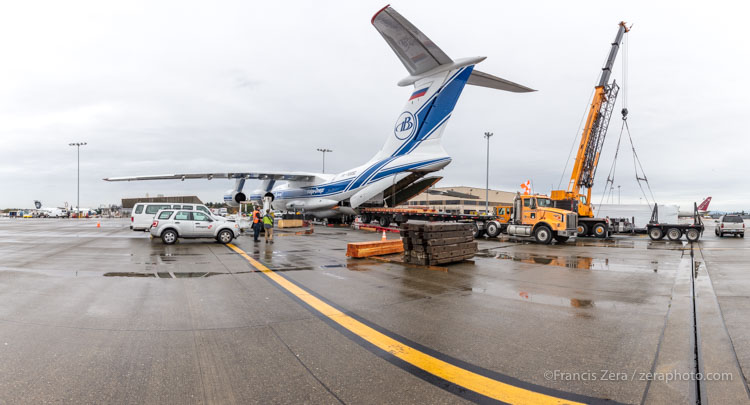
A crane and flatbed trailer were used to load large crates of specialized welding equipment that was to be delivered to Australia
This particular Ilyushin-76-TD-90-VD is owned by Russia-based Volga-Dnepr Airlines, which operates five of these aircraft. Part of the Volga-Dnepr group, the parent company also owns Airbridge Cargo Airlines and Atran Airlines.








